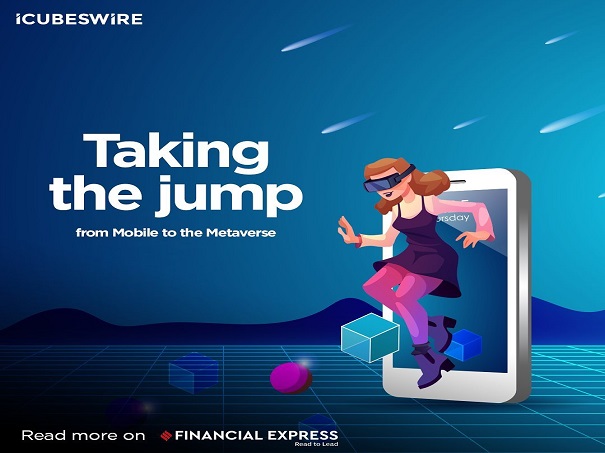Give Your Brand Campaign a Voice of its own!
When Allen Dale coined the phrase “If necessity is the mother of the invention, then laziness is the father,” in 1990, little did he know that it would describe the driver of personal technology to such an extent. Evolutionary and revolutionary research has historically revolved around the aim to reduce the human effort to achieve a task. When users were posed with an opportunity that there was no need to type to interact with your computer, phone, home, smart devices, etc, you need only speak to them, it was destined to be a winner.
Isaac Asimov, an American writer and professor, was quick to tip us on the future of technology as we are experiencing right now. The iconic i Robot, later adapted masterfully into a film of the same name, told the story of a scientist on his quest to make a robot which will be a “thinking machine”. He envisioned a machine which could reason, imagine, dreams and even feel or predict human sentiments. A robot that could be as human-like as he could fathom. What he thought fiction, is now a reality with artificial intelligence and deep learning technologies creating Al engines that can read a human’s psyche, interpret intention, decipher subtexts and even interact or converse with humans on the most raw emotional level. A generation ago, this was unheard of, now it is the reality of human interaction with personal technology and how businesses are diving deep into the currents to exploit voice search, speech recognition, natural language processing and implementing all of the qualitative gains into voice generated digital campaigns.
Natural Language Processing (NLP)
It simply means how a computer comprehends human language, and Artificial Intelligence (AI) have transformed how humans interact with technology. Today, voice technology, speech recognition and Deep Learning have changed the face of ‘Search’ as we know it. Users are clocking over a billion voice searches each month. A study estimates voice may grow up to be a $40 billion channel by 2022. ComScore predicts that by 2020, more than 50 per cent internet searches will be voice generated. That presents a massive opportunity for businesses to tap into this evolving technology and look to the next big thing in marketing—voice generated digital campaign.
How NLP works
NLP leaned majorly on Big Data and wherein algorithms were designed to look out for keywords and key phrases and deliver predetermined responses. The biggest drawback it faced was not outstanding in interpreting the user’s directions with regards to what the user wants, differentiating between homonyms and other dynamics of speech and language that required an evolved AI. The answer was deep learning where machines could be taught, take a cue from previous events, and trained to predict the intention of a user. This brought a paradigm shift to voice search.
Consumer comfort with Voice-generated digital campaign
Google and Alexa got the early movers advantage of course, but their products also helped users get accustomed to NLP.
The most primal gratification a user gets from voice is that it can carry out searches on the web, shop at platforms like Amazon, control the Internet of Things ecosystem in your smart homes, automate business processes, provide a more engaging touch all without having to type a single letter. The experience is more conversational and interpersonal in the more conventional sense.
At the same time, Deep Learning NLP models help in returning targeted, refined, insightful and accurate results to a user increasing customer experience.
Voice is great for conversion
The minute details of accent, the gender of voice, mood and pace are all aspects which one shouldn’t be lost on. A study by BrightLocal claims as many as 28 percent voice search users call businesses they voice searched for as it allowed them to interact with the brand via voice.
Impressions on the conventional text on banner ads don’t usually convert to high calls to action because of the tsunami of information a user is exposed to on a web page. Voice generated digital campaign, with its progressively learning nature can easily predict the user’s action and present a more customized experience based on those predictions.
How is the voice generated digital campaign landscape?
As platforms like Siri and Alexa have taken over the day-to-day tasks of users, there is a greater sentiment about Siri and Alexa being popular because they are more human-like. Both companies invest heavily so that users do more than search and actually converse with these AI engines and the more user’s converse with them, they churn out not just desired results but intelligent, witty and often deliberately humorous responses. They learn how to break through the semantics of voice and language, jargons, multiple meanings, and contextual complexities.
Today we are using NLP in text-to-speech, email, conversion, healthcare, e-learnings, drawing qualitative insights from customer interactions, figuring out through the AI, the sentiment one may hold towards a product or business or an experience.
The right time is now
This technology is the next disruptor in business intelligence, marketing, enterprise information solutions and e-commerce as already proven by Amazon and many more.
The not-so-distant-future will be dominated by unstructured data and more and more businesses making vital decisions based on that trove. It will be prudent for organizations to assume a position of preparedness so that they can carve their strategy better and react real-time with better results.
As published on




